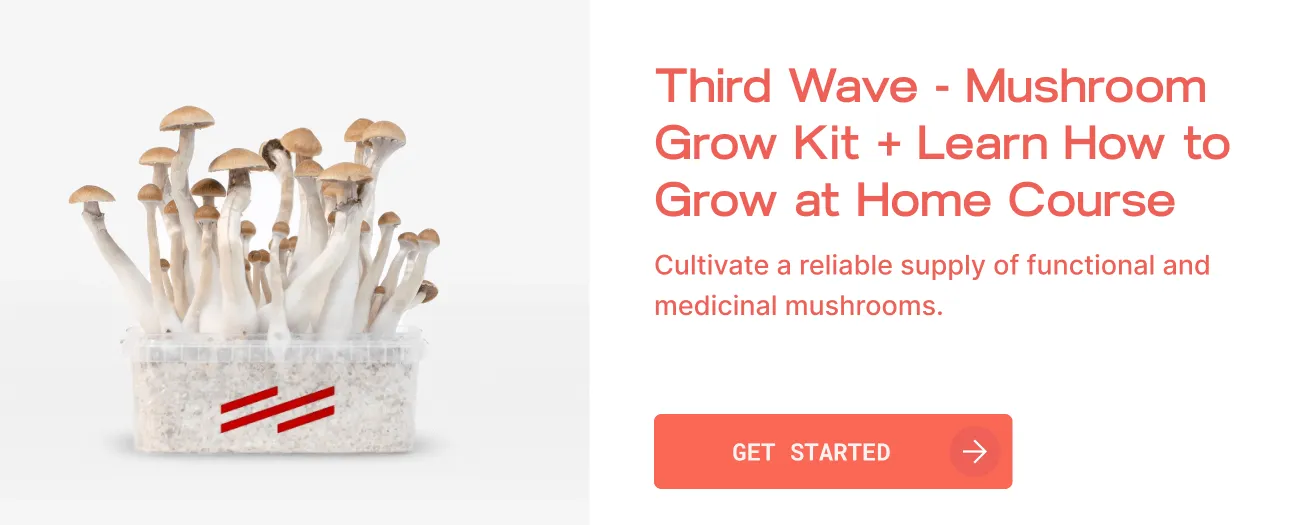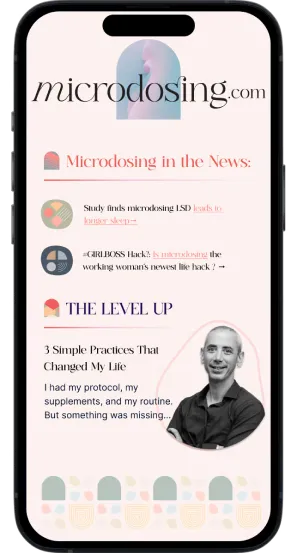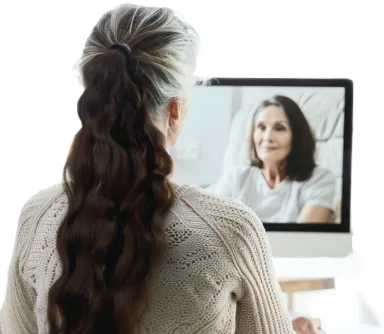What is microdosing?
Silicon Valley swears by it, celebrities say it’s changed their lives, and podcasts discuss its impact on mental health, but what exactly is it?
Millions of people want to learn more about microdosing psychedelics, and millions more are already microdosing, intending to improve their mental health. (1) (for the purposes of this guide, we’ll be talking about psilocybin-containing mushrooms, A.K.A. magic mushrooms, A.K.A. shrooms.)
The real challenge in learning about microdosing lies in finding information you can trust. While there are many anecdotal reports suggesting that microdosing magic mushrooms can help with various health issues, there is a lack of clinical research. (11)(12) Most existing studies, including FDA clinical trials, have primarily focused on macrodoses (large doses) of psychedelics. This focus on larger doses is promising, but these results cannot just be assumed to apply to the much smaller doses microdosing relies on.
More clinical studies are needed to examine the benefits of microdosing psilocybin fully. Still, understandably, many people don’t want to wait decades for the science to catch up with a practice that is already widespread. We know that for the majority of people (with some key exceptions) large doses of magic mushrooms, while hallucinogenic, are not typically habit-forming or harmful to physical health. Current science indicates psilocybin has a favorable safety profile (2) —Frontiers in Psychiatry reports that “the primary risk for psilocybin is psychological safety, not physiological safety.”
Most people who are interested in microdosing shrooms aren’t looking for a psychedelic trip; they simply want to explore their options after hearing that a tiny dose of magic mushrooms may help to improve their mood, focus, or energy levels.
This guide is for readers who want to understand what a microdose is, the most common range of effects, legal considerations, and how to microdose psilocybin mushrooms following an evidence-guided protocol developed by today’s psychedelic experts.
Just want to get started microdosing now? Click here to access the leading experts in personalized microdosing protocols, with more than 5,000 customers worldwide.What is Microdosing?
What does a microdose feel like? It really depends on who you ask.
Microdosing practices are still evolving, and as part of that evolution, the precise definition of a microdose is actively debated. However, most agree that a microdose is a dose so small that it doesn’t produce significant psychoactive effects.
A review of thousands of field reports shows that dosing practices vary widely. Some think a microdose should be “sub-perceptual,” meaning the person taking it feels no noticeable effects on their thinking or cognition and cannot identify any drug effects. Others say it’s okay to, by chance, feel some mood elevation or energy shift while taking a microdose, and still, others intentionally work to fine-tune their dose until they feel their preferred level of effect. (13)
Because everyone’s brain and body are different, the actual size (weight) that defines a microdose varies to some degree from person to person. (more below)
Microdosing.com believes that all forms of evidence-guided dosing and protocols have value, however, for the sake of simplicity, we define a microdose as “sub-perceptual,” meaning the person taking it feels no noticeable effects. We define doses that cross the threshold from sub-perceptual to perceptual (mood elevation or an energy shift) as minidoses to differentiate that the user “feels” something.
“We define doses that cross the threshold from sub-perceptual to perceptual as minidoses to differentiate that the user “feels” something.”
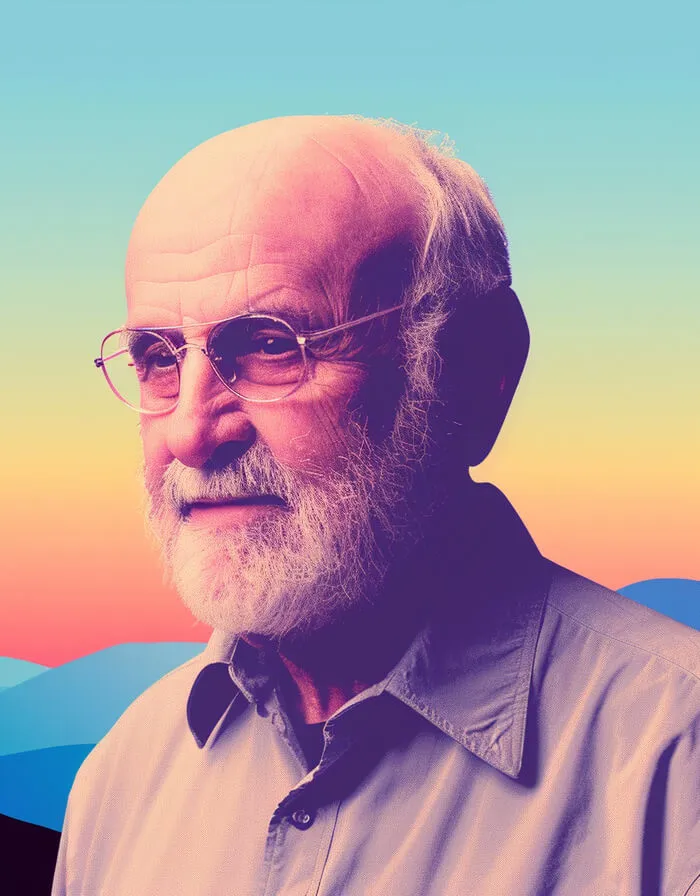 Dr. James Fadiman
Dr. James Fadiman
Who Invented Microdosing?
Dr. James Fadiman’s 2011 book The Psychedelic Explorer’s Guide was one of the first more formalized and testable protocols for microdosing. (4) Dr. Fadiman, who earned his Ph.D. in psychology from Stanford University, has been researching psychedelics since the 1960s, including historical concepts of microdosing and systematic analysis of anecdotal reports by users.
Fadiman argues that Indigenous people were almost certainly microdosing for thousands of years, (14) but he himself grew intrigued by the concept when he heard that Albert Hoffman (the Swiss scientist who famously accidentally synthesized LSD) was interested in the impact of tiny amounts of LSD. (5) So while Fadiman did not invent the idea, his book and protocol were instrumental in disseminating the concept.
Why Has Microdosing Become Popular?
Fadiman’s book became popular in Silicon Valley circles among tech engineers who were looking for ways to increase productivity, spur creativity, reduce stress, and improve mood. (6) California, of course, has always been at the forefront of the American psychedelic movement, and the culture of both the Valley and Hollywood not only accept but champion boundary-pushing, mind-expanding practices. As a result of positive anecdotal reports in these circles, microdosing is believed to have quickly spread across North America and much of the globe via social media and news reports.
Who Invented Microdosing?
Dr. James Fadiman’s 2011 book The Psychedelic Explorer’s Guide was one of the first more formalized and testable protocols for microdosing.4 Dr. Fadiman, who earned his Ph.D. in psychology from Stanford University, has been researching psychedelics since the 1960s, including historical concepts of microdosing and systematic analysis of anecdotal reports by users.
Fadiman himself argues that he believes Indigenous people were almost certainly microdosing for thousands of years, (14) but he himself grew intrigued by the concept when he heard that Albert Hoffman (the Swiss scientist who famously accidentally synthesized LSD) was interested in the impact of tiny amounts of LSD. 5 So while Fadiman did not invent the idea, his book and protocol were instrumental in disseminating the concept.
Why has microdosing become popular?
Fadiman’s book became popular in Silicon Valley circles among tech engineers who were looking for ways to increase productivity, spur creativity, reduce stress, and improve mood.6 California, of course, has always been at the forefront of the American psychedelic movement, and the culture of both the Valley and Hollywood not only accept but champion boundary-pushing, mind-expanding practices.

What Does The Science Say About Microdosing?
The scientific evidence for microdosing is promising but still inconclusive. Although anecdotal reports and initial studies hint at potential benefits, more controlled trials are necessary to establish definitive evidence, particularly regarding psilocybin mushrooms. Here’s a summary of current research findings:
While there has been significant evidence that large doses of psilocybin in clinical settings show great promise for patients with depression (17), anxiety (18), and addiction(19,34), there is also evidence that microdosing mushrooms for major mental health challenges such as depression, anxiety, eating disorders, and PTSD (10) may be effective for some.
Psilocybin has been shown to promote neuroplasticity, (15) the brain’s ability to form new neural connections, which may underlie the cognitive and emotional benefits reported by microdosers.
Microdosing acts on the brain’s serotonin 2A receptors (16), which are crucial for mood regulation and perception, potentially improving mood, energy, and cognitive health.
Regular microdosing may improve mental clarity, boost creativity, stabilize emotions, and alleviate symptoms of mental illnesses. (11, 23)
Evidence even suggests that psychedelic mushrooms, at various doses, may be able to assist in managing physical issues like chronic pain, (7) migraines, (35), and even traumatic brain injury. (9)
TL;DR? The scientific jury is still out as to whether microdosing is effective—but many people are trying it with the goal of feeling better.
What Does Microdosing Feel Like? A 5 Point Scale
As microdosing evolves, anecdotal experiences from guides, coaches, and participants provide valuable insights that often diverge from published studies.
Inspired by our team’s thoughtful conversations, reflections on trip reports, and personal experiences, the table below shares a scale we like to use at Microdosing.com to label and discuss increasingly larger doses of dried psilocybin-containing mushrooms.
It’s important to note that these observations in the table are based on non-scientific reports and should be viewed as experimental and exploratory rather than evidence-based. Microdosing is not a one-size-fits-all approach.
Different people will experience varied effects, as different types of mushrooms, preparations, and combinations can significantly impact the results.
What Type of Mushrooms Are Typically Used to Microdose?
Psilocybin mushrooms, often described as magic mushrooms, are a fungi species that contain the naturally occurring psychedelic compounds psilocybin and psilocin, in addition to other related compounds of interest that may play a role in the human psychedelic experience. (22)
There are over 180 species of mushrooms known to produce psilocybin, and these species span across several genera, the most prominent being Psilocybe Cubensis (cubensis or cubes), which includes around 100 species known for their psychoactive properties. (3)
In our collective personal experiences at Microdosing.com, we have seen lab reports detailing the potency of psilocybin in dried psilocybe mushrooms as low as ~0.4 mg/gram and as high as ~23 mg/gram. These high-potency mushrooms were more than 50 times stronger than the lowest-potency samples observed!
| Sample | Name | Date | Total Miligrams Psilocybin Per Gram of Dried Mushroom | Link to Certificate of Analysis |
|---|---|---|---|---|
| Highest Potency | P. cyans – Blue Spring | 01/26/2023 | 23.81 | Certificate of Analysis |
| Lowest Potency | Omni Revert | 07/10/2022 |
0.4 | Certificate of Analysis |
The same amount of mushroom by weight can result in significantly different doses of psilocybin:
0.1 gram of dried mushroom with potency at 23 mg psilocybin/gram = 2.3 mg psilocybin/dose
0.1 gram of dried mushroom with a potency of 0.4 mg psilocybin/gram = 0.04 mg psilocybin/dose
This is a 57.5x difference in potency in the same amount (weight) of dried mushrooms.
This significant range in the potency of mushroom varieties is one of the main reasons why Microdosing.com believes starting on the lowest end of the spectrum when exploring a microdosing protocol is the best practice for everyone. We also advise that everyone obtain guidance (and ideally a certificate of analysis) on the specific mushrooms they plan to work with.
Is Microdosing Mushrooms Safe?
Consuming any type of psychoactive substance always involves some risk—but, for the majority of the population, magic mushrooms, particularly when taken in very small doses, are considered low risk, (21) provided you know exactly what you’re ingesting and take proper precautions around your psychological safety. As with any mind-altering substance, avoid any activities that could be dangerous while intoxicated (driving, operating machinery, high-contact sports, stressful decisions).
Note that there are theoretical concerns for potential cardiovascular risks, such as cardiac fibrosis, in longer-term use of psilocybin, yet it has not been well studied at this time for microdosing nor seen in field report studies by users. (28)
Contraindications, Safety & Precautions
Always consult a healthcare professional before starting any microdosing regimen. Psychedelics are not for everyone. Each individual’s experience is unique, and not everyone is suited for microdosing.(14)
It’s important to know your personal and family mental health history because there is a small percentage of people with specific mental health issues who should avoid psychedelics entirely. You should also avoid psychedelics and microdosing if you are pregnant, nursing, or if you or your family have a history of seizure disorders, cardiovascular disease, arrhythmias, or stroke. Additionally, avoid these substances if you are on certain psychiatric medications that may interact. Though rare, psilocybin can impact the use of certain medications. Consult a healthcare professional if you have any underlying health conditions or are taking medication.
According to Erica Zelfand at Psychedelic Support, “Psychedelics appear to disrupt the neural patterns upon which rigid patterns of thought and behavior—such as those seen in depression, OCD, and addiction—rest.” (23) She compares the neural disruption to shaking a snow globe and cautions that people who have neurological imbalances should be even more careful when considering the use of psychedelics.
Recent research shows psilocybin to have low toxicity and abuse potential. Short-term microdosing is typically seen as low risk. However, misuse of psychedelics or heightened sensitivity to their effects can have serious consequences. If you are new to psychedelics, even microdosing, it is wise to engage with your medical provider. If your provider is uninformed or unwilling to work with you, consider seeking advice from a certified microdosing coach. At the very least, have a sober person who will be responsible for you during your first experience. Although a microdose should not cause a hallucinogenic trip, having a friend or family member aware of your location and activities can help reduce anxiety.
Sourcing Safety
The difficulty of sourcing psilocybin mushrooms is a major safety concern that cannot be overlooked. Psilocybin mushrooms are often illegal to possess, cultivate, or consume; be sure to check the laws in your area.
People source psilocybin microdoses in several ways:
- Through peer-to-peer networks, meaning friends, family, community events, or other trusted people.
- Through home grows. (Despite legal restrictions, many people choose to grow their own mushrooms at home.)
-
While there are plenty of advertisers on social media claiming to sell magic mushrooms, Instagram and all other social media platforms are not considered safe and reliable sources!
-
Sourcing from smoke shops, head shops, gas stations, vape stores, or other convenience or gift-type stores is also not considered safe and reliable, especially in light of a recent FDA recall.
-
Psychedelic mushrooms do grow in the wild on every continent save Antarctica. However, wild gathering is not regarded as a safe source, as almost every edible mushroom has a poisonous lookalike, and even deeply experienced mycologists have trouble identifying which ones are safe.
Where Is It Legal To Microdose?
Most people who microdose are doing so outside of the boundaries of the law.
Sadly, consuming psilocybin mushrooms is rarely legal in the United States. It is legal in the context of some clinical studies, and in the states of Oregon and Colorado in very specific therapeutic contexts, where licensed professionals are permitted to administer psilocybin in regulated settings.(20)
What About Decriminalization?
Decriminalization ordinances, while significant, do not actually change the law. Cities like Denver, Ann Arbor, Oakland, and Santa Cruz (20) have passed ordinances decriminalizing psychedelics, but decriminalization does not equal legalization. It simply requires that law enforcement make prosecution of psychedelic consumption the absolute lowest priority.
How to Microdose: Expert Protocols Explained
We don’t have scientific consensus on how exactly microdosing works or what the ideal regimen is, but there are at least two schools of thought developed by leaders in the field and another protocol developed and championed by the consensus of microdosers online, all of which we’ve presented below for educational purposes.
The Fadiman Protocol:
Outlined by Dr. James Fadiman in his book “The Psychedelic Explorer’s Guide,” this protocol provides a structured approach for using sub-perceptual doses of psychedelics with the intention of enhancing well-being and productivity.
Step 1: Plan Your Set and Setting
It is recommended to set yourself up mentally and physically for the experience, including thinking about why you want to microdose in the first place and what you hope to gain from the practice. It is also recommended to be in a calm, supportive setting when you microdose (i.e., microdosing wouldn’t be advised the day you have to have a root canal or appear in court).
Step 2: Observe The Fadiman Protocol
Day 1 (Dose Day): Take the microdose in the morning, preferably with breakfast. A typical microdose is about 1/20th to 1/10th (5-10%) of a standard recreational dose, so for psilocybin, a microdose is approximately 0.1 – 0.3 grams of dried mushrooms.
Note any subtle changes in how you feel and what you notice throughout the day, and document your experience in a journal dedicated to microdosing. Include mood, energy levels, cognitive performance, emotional state, and any other notable effects.
Fadiman emphasizes that his concept of a microdose is sub-perceptual (i.e., you don’t feel high or altered). At microdosing.com we have found that a 0.3 mg dose can potentially produce an experience of going beyond sub-perceptual effects. We advise starting with a dose of 0.1 gram and adjusting as needed.
Day 2 (Transition Day): No dosing. Observe and record any lingering effects from the previous day.
Day 3 (Normal Day): No dosing. This is a reset day to return to your baseline state.
Day 4 (Dose Day): Repeat the process, taking the microdose in the morning.
As you continue the protocol, look for patterns in your observations to understand how microdosing affects you. Follow this microdosing schedule (one day on, two days off) for a period of four to eight weeks.
Break Period: After completing the initial cycle, take a break in order to avoid any potential tolerance buildup. We suggest at least four weeks.
Evaluation: Reflect on your journal entries and overall experience to determine if microdosing has been beneficial. Decide whether to continue, adjust, or discontinue the practice.
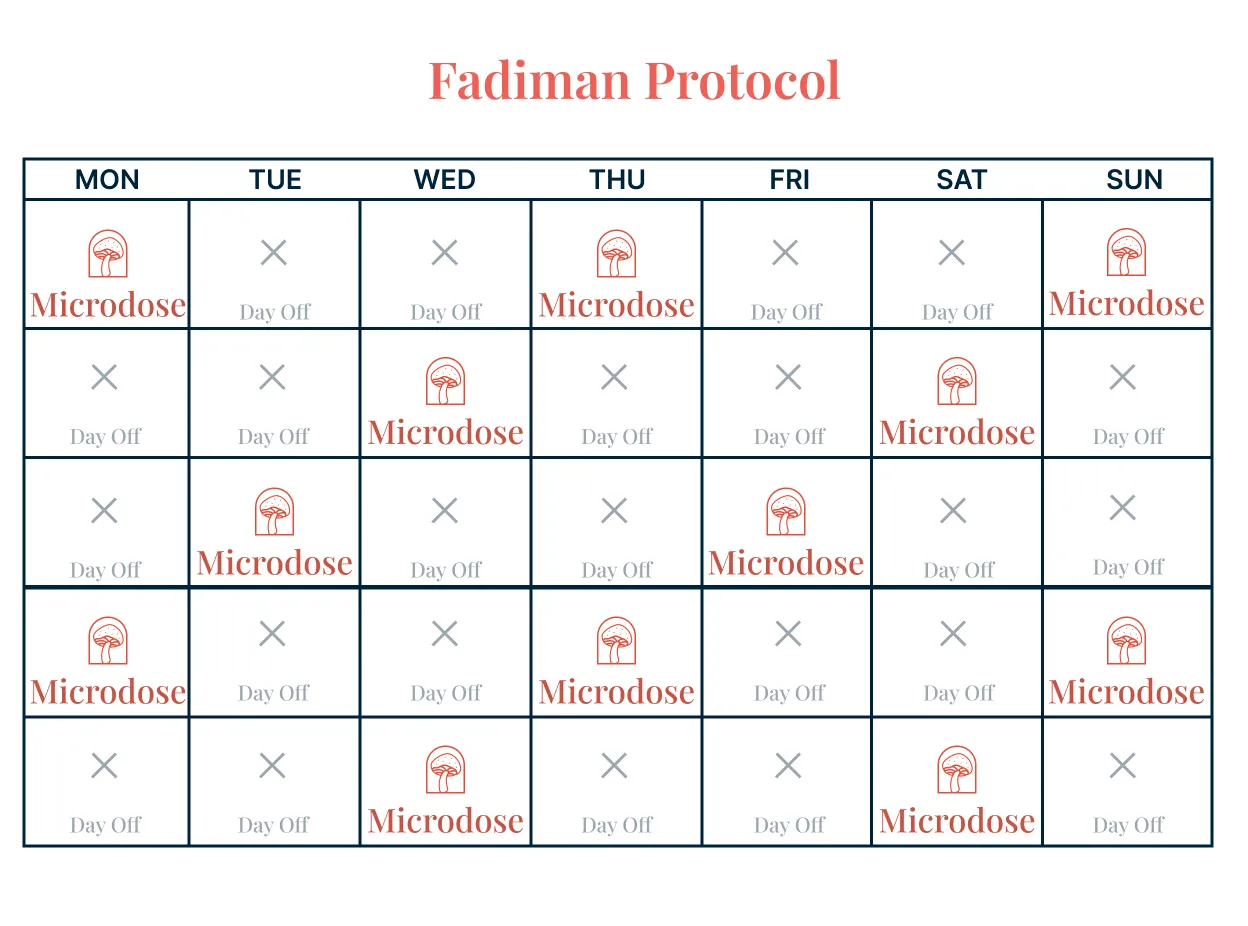
The Stamets Stack Protocol
The Stamets Protocol (24) for microdosing was developed by renowned mycologist Paul Stamets. It differs from the Fadiman protocol in two main ways: It combines psilocybin with other natural supplements, and instead of one dose day, two days off, it has you dose four days in a row, then take three days off.
Step 1: Assemble Your Microdoses
Alongside your psilocybin microdoses, Stamets adds two other non-psychoactive substances:
- Lion’s mane mushroom supplements, which is intended to support cognitive function
- Niacin (vitamin B3), which is intended to promote the distribution of the other compounds throughout the body
Dosage guidelines based on patents (29) held by Paul Stamets:
Psilocybin: Typically around 0.1-0.2 grams of dried psilocybin mushrooms, ensuring a sub-perceptual dose.
Lion’s mane: 100-200 milligrams of a typically 10:1 extract or around 500-2000 milligrams of dried lion’s mane mushroom.
Niacin: Around 100-200 milligrams, adjusted based on individual tolerance to avoid excessive flushing.
Step 2: Plan Your Set And Setting
Just as recommended in The Fadiman Protocol, prepare mentally and physically for the experience, including thinking about why you want to microdose and what you hope to gain from the practice. Again, ensure you are able to be in a calm, supportive setting when you microdose.
Step 3: Observe The Stamets Stack Protocol
The schedule for the Stamets Stack is four days on, three days off, as follows:
Day 1: Take microdose, lion’s mane and niacin
Day 2: Take microdose, lion’s mane and niacin
Day 3: Take microdose, lion’s mane and niacin
Day 4: Take microdose, lion’s mane and niacin
Days 5-7: Take a break.
Repeat this cycle for four to six weeks, followed by a break of two to six weeks. As you continue the protocol, look for patterns in your observations to understand how microdosing affects you.
The Two Day A Week Protocol
We share the Two Day A Week Protocol as an example of practices emerging during this exploratory period. It is less written about and not created by a recognized expert in the field.
A 2019 survey of more than 1,000 participants found that nearly half of them designed their own microdosing protocol. (14) The Two Day A Week Protocol evolved as a result of consumers’ desire to dose on specific days of the week. It was spread primarily by word of mouth in online microdosing communities.
Microdosing twice a week gives more control over the schedule, as well as opportunities to pair microdosing with specific activities or events. Anecdotal reports say that this protocol involves taking a microdose on two specific days of the week with at least one “no dosing” day in between. Choose two days of the week, space them out so you allow for recovery days, and then follow that protocol for 4-8 weeks, allowing two weeks for an off-cycle.
Why Integration & Complementary Practices Matter
As the clinical lead for Imperial College London’s psilocybin trials, (25) British psychologist Dr. Rosalind Watts has been a guide in hundreds of psychedelic trials of large doses of psilocybin. (30) A strong proponent of psychedelics, she nevertheless cautioned in a recent Medium piece that “the greatest threat to a healthy psychedelic future is the fetishizing of just the drug alone.” (26) After hundreds of sessions spent with mental health patients undergoing psychedelic experiences, she firmly believes that the mushroom is “the opening of a door….a catalyst to the therapeutic process, not the therapeutic process itself.”
Many people approach psychedelics and microdosing inspired by media headlines about “rebooting your brain” and “hitting the magic reset button”. Microdosing.com believes it’s important to keep in mind when engaging with these practices that it is also the community support, professional mental health services, and intentionality that are essential to transformation as well. Mushrooms may open the door —but we have to choose to walk through it, and walking can be hard work.
More On Psychedelic Integration
Psychedelic integration (27) refers to the process of contemplating and then working (integrating) the insights of a psychedelic experience into your life. It’s taking the experience and trying to make sense of it, whether that’s through journaling, meditation, movement practices like yoga or tai chi, or talking with friends or therapists. It’s interpreting the experience, learning from it, and putting what we’ve learned into practice in our daily lives.
Integration should be a key part of your microdosing protocol. (27) As the doses are tiny and you consume them over a period of weeks, tracking your experience in a journal can be crucial to observe any shifts in your mood and energy. Microdosing is more than consuming tiny bits of powdered mushrooms on a schedule—ideally, it is part of a larger process of what Eastern philosophy calls svādhyāya, the Sanskrit term for self-study.
Finding Professional Guidance, Community & Resources
Finding Professional Guidance, Community & Resources
You don’t have to learn to microdose on your own. There are quality courses, certified coaches, and informed communities for you to learn from. Below, we share a few words on the importance and value of each, along with Microdosing.com’s trusted partners. For more detail, read our full-length article on Microdosing Courses and Coaching.
We define “trusted partners” as those with whom we have established personal relationships and met in person. This trust is paramount, and we encourage feedback if any concerns arise after a referral. We value this ongoing trust and engage in after-market monitoring of our partners to ensure quality and reliability.
Microdosing Courses
Starting with a solid foundation can help you to feel safe, comfortable, confident, and prepared. Investing in a course designed by experts who specialize in microdosing psychedelics can be a great way to get thoroughly educated before beginning a protocol. Microdosing.com endorses Third Wave’s Microdosing Courses, created by industry expert Paul F. Austin.
Work With A Coach
Working with a certified coach can offer personalized guidance and support throughout your microdosing journey. A coach can help you set goals, track your progress, and ensure you’re following safe and effective practices. Microdosing.com partners Bhavani Wellness and The Psychedelic Coaching Institute are great resources for finding a certified microdosing coach.
Benefits of Working with a Coach:
- Personalized protocol development
- Ongoing support and accountability
- Professional insights and advice
- Assistance with integration practices
Recommended Coaching Programs:
Join A Community
Connecting with a community of like-minded individuals can provide additional support and resources. Online forums, social media groups, and local meetups can be valuable sources of shared experiences and advice. Third Wave’s Group Microdosing Courses are an excellent opportunity to comprehensively learn about microdosing while surrounded by a cohort of other learners.
Closing Thoughts On Microdosing Magic Psilocybin Mushrooms
Microdosing psilocybin mushrooms brings forth an intriguing blend of potential benefits, ongoing debate, and questions that still need answering. As we’ve explored, many individuals have reported enhanced mood, increased creativity, and improved mental clarity through careful, low-dose regimens. These anecdotal reports, combined with preliminary scientific findings, suggest that microdosing could hold promise for mental health and overall well-being.
However, it is crucial to approach microdosing with caution and awareness. The legal landscape is complex and varies significantly across regions. Additionally, the variability in individual responses and the need for professional guidance cannot be overstated. While some may find microdosing to be a valuable tool in their wellness toolkit, it is not a one-size-fits-all solution.
The current body of research, though promising, is still in its infancy. As more rigorous, controlled studies emerge, we will gain a clearer understanding of the true efficacy and safety of microdosing psilocybin mushrooms. In the meantime, those interested in exploring this practice should prioritize sourcing from reliable providers, adhere to evidence-informed protocols, and engage in integration practices to fully harness the potential benefits.
Microdosing psilocybin mushrooms represents a fascinating frontier in the quest for mental health and personal growth. As we navigate this evolving landscape, a balanced approach that combines curiosity with caution will serve us well. Whether you’re a seasoned psychonaut or a curious newcomer, the journey of microdosing is as much about the process as it is about the destination.



